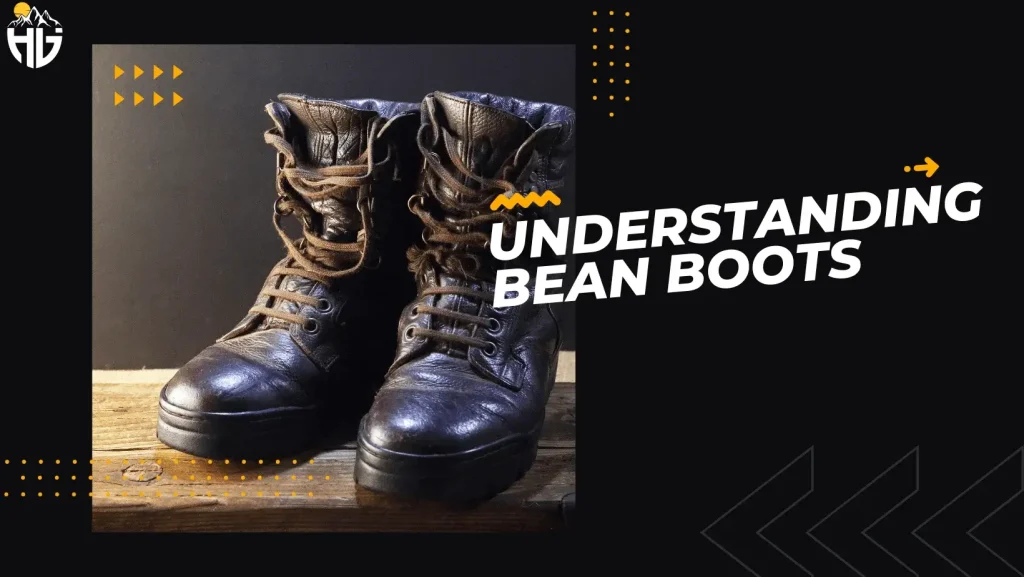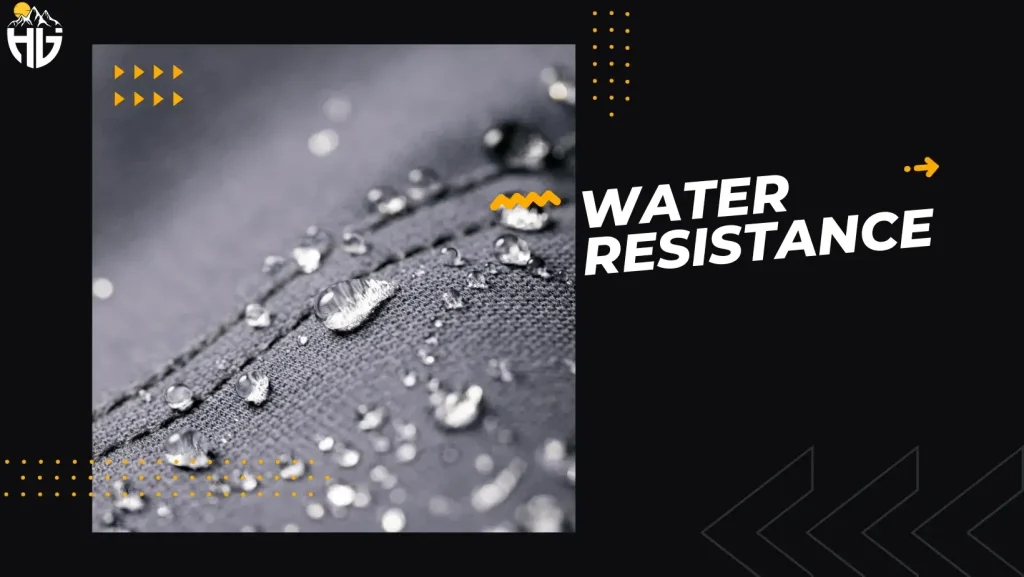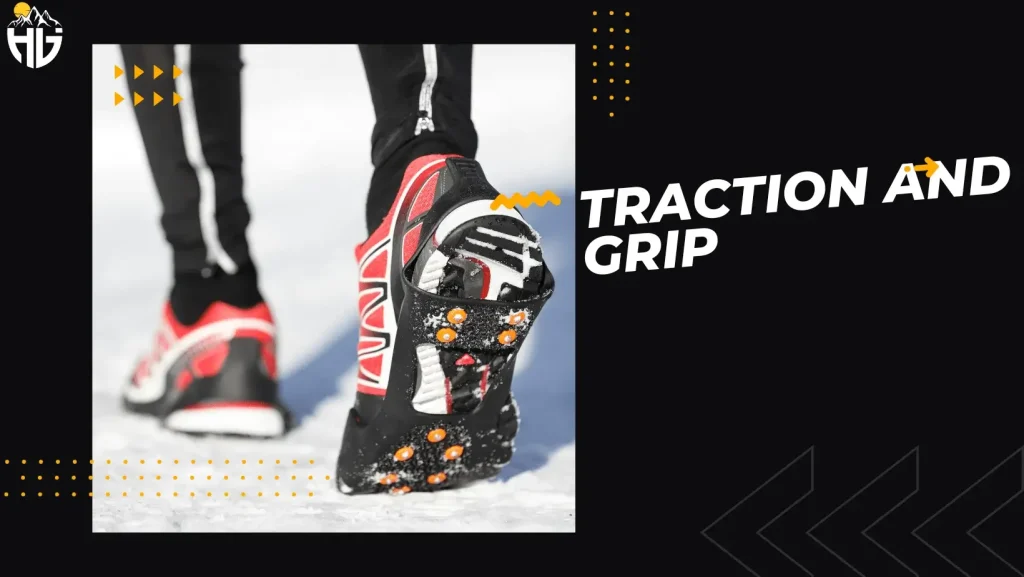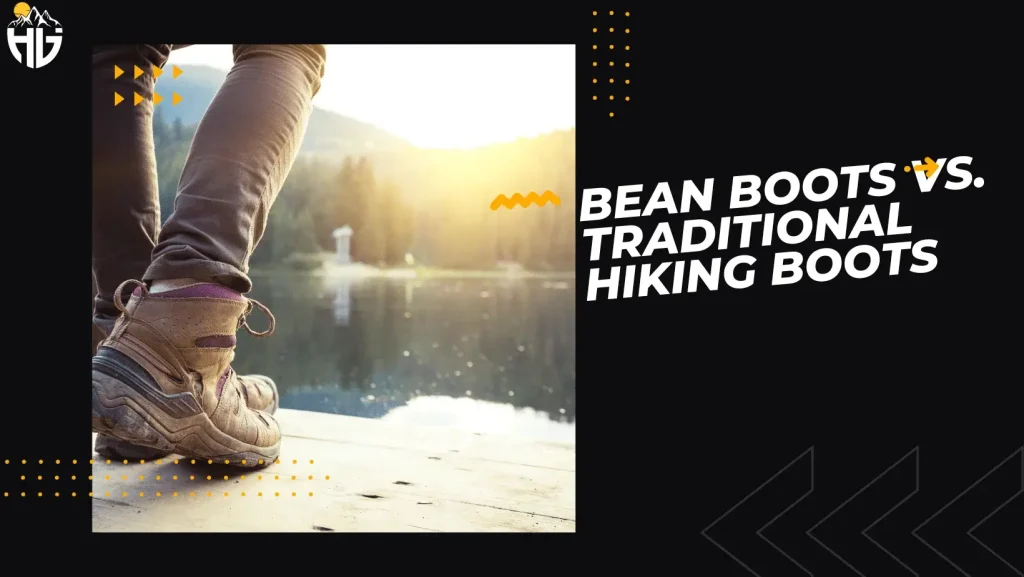Are Bean Boots Good for Hiking? A Guide To Answer

Selecting the right footwear is crucial for hikers seeking comfort, protection, and performance. In this guide, we aim to address a question among outdoor enthusiasts: Are Bean Boots Good for Hiking? By the end of this blog, you will know the unique qualities and characteristics of bean boots. We will provide valuable insights into their suitability for hiking adventures.
When choosing footwear for hiking, it is essential to consider factors such as durability, comfort, and functionality. By examining the specific features and benefits of bean boots, we will assess their potential as reliable companions on hiking trails. So, let’s dive into the discussion and unravel the suitability of bean boots for the adventurous world of hiking.
Also Read
Understanding Bean Boots

Bean boots, often called duck boots, are a unique style of footwear that combines a rubber lower section with a leather upper. This distinctive design provides a balance of waterproofing and durability. This makes them a popular choice among hikers, campers, and outdoor enthusiasts.
Duck Boots are characterized by their signature two-tone appearance. Their lower portion is typically made of vulcanized rubber. This rubber section extends from the sole to just above the ankle, providing excellent protection against water, muddy and wet trails. The upper part of the boot is usually crafted from high-quality leather, offering durability, flexibility, and an aesthetic appeal.
History of Duck Boots
The history of bean boots can be traced back to the early 20th century when Leon Leonwood Bean, the founder of LL Bean Boots developed the first pair in 1911. Bean was an avid outdoorsman who sought a practical solution to keep his feet dry during hunting and fishing trips.
He was inspired by the design of traditional moccasin-style boots and rubber overshoe technology. He combined the two to create a functional and versatile footwear option. Over the years, bean boots have gained immense popularity among outdoor enthusiasts. It’s because of their ability to withstand various weather conditions and terrains.
Hikers appreciate their durability, waterproofing capabilities, and unique style. Duck Boots have become synonymous with reliability and have strengthened their place as a trusted choice for hikers.
Features That Might Make Them Suitable for Hiking
Given their unique design and features, Bean Boots might appear as a good option in the hiking footwear arena. Their water-resistant design, robust build, and improved traction are qualities that any hiker would appreciate.
However, the trails demand more than just a strong design. They require footwear that can rise to the challenges of something more. Can Bean Boots rise to the occasion? We’ll delve into this in the sections ahead, as we evaluate the suitability of Bean Boots for hiking. Stay tuned!
Are Bean Boots/Duck Boots Good for Hiking?

Short Answer: Yes, Bean Boots are Good for Hiking.
But, we will not recommend them for longer, more steep, and rough hikes. These are good for flat trails, with less mud, elevation, and weather conditions.
Keep reading on, and understand if duck boots are good for your desired hike.
Comfort and Fit

Bean boots prioritize comfort to keep your feet happy during extended hikes. They incorporate cushioning and arch support features that provide a comfortable and supportive feel. The cushioned insoles help absorb shock and reduce fatigue. This will allow you to hike for longer periods without discomfort.
Proper fit is crucial for hiking footwear, and bean boots take care of this as well. The lacing system on bean boots are for a customizable fit. It ensures that the boots stay snug and secure on your feet throughout your hiking adventures. This fit prevents unnecessary friction and blisters, enhancing overall comfort during long treks.
Durability and Longevity

Duck boots are built to endure the demands of hiking activities. They boast a robust construction that can withstand rough terrains and constant use. They are the combination of high-quality materials, such as durable rubber and sturdy leather.
It ensures that these boots can handle the rigors of hiking for an extended period. The materials used in bean boots contribute significantly to their durability. The vulcanized rubber lower section provides excellent resistance to scuffs, abrasions, and impacts encountered during hiking.
The leather upper, known for its strength and flexibility, enhances the overall durability of the boots. This combination of materials ensures that bean boots can withstand the challenges faced on hiking trails.
You may Interest in: Are Blundstone good for Hiking?
Versatility and All-Weather Performance
Bean boots are highly versatile and suitable for a wide range of hiking conditions and terrains. Whether you’re trekking through muddy trails, navigating rocky terrain, or crossing shallow streams, bean boots can handle it all. Their sturdy construction and waterproof design make them well-suited for various environments in hiking adventures.
Duck Boots have the ability to withstand different weather elements. From rainy days to snowy conditions, these boots provide reliable protection against moisture. The rubber lower section acts as a barrier. It prevents water from seeping into the boots and keeping your feet dry. This feature is especially valuable when hiking in wet or damp environments.
Water Resistance

The combination of the rubber lower section and leather upper creates a barrier that effectively repels water. The rubber lower section acts as a shield against water, preventing it from seeping into the boots even when exposed to wet conditions. This ensures that your feet remain dry, reducing the risk of discomfort or blisters during your hike.
Some models incorporate breathable materials or moisture-wicking linings that help regulate foot temperature and prevent excessive sweating. This feature allows moisture to escape from inside the boots. This enhances overall comfort during extended hikes and reduces the likelihood of clammy or sweaty feet.
Traction and Grip

The outsole is typically made of rubber, which offers excellent grip and traction capabilities. The carefully crafted design of the outsole ensures stability and helps hikers maintain their footing on challenging surfaces. The tread patterns on the outsoles of bean boots contribute significantly to their traction.
The patterns are strategically designed to maximize grip and minimize slippage. Deep lugs, multidirectional patterns, and aggressive treads are often incorporated into the design. These features work together to enhance traction by providing increased surface contact and preventing the accumulation of debris, such as mud or rocks.
On muddy trails, the deep lugs and multidirectional treads effectively bite into the soft ground, providing hikers with stability. When navigating rocky terrain, the durable rubber outsoles with their sturdy grip allow for confident movement. Even on slippery surfaces such as wet rocks or moss-covered trails, the grip of bean boots helps hikers maintain traction.
Support for Challenging Terrain
The rubber lower section and leather upper provides ankle support, helping to prevent twists and sprains during hikes. This support is especially beneficial when traversing uneven or rocky terrain, where stability is crucial.
When it comes to off-trail navigation and scrambling, bean boots are a dependable choice. The ankle support provided by bean boots enhances stability during off-trail navigation. This gives hikers the confidence to explore and tackle more adventurous routes. The reliable traction and grip of the boots further assist in maintaining control and balance while scrambling over rocks or navigating through challenging obstacles.
Bean Boots vs. Traditional Hiking Boots

When comparing bean boots to other popular hiking boot options, it’s essential to consider the unique features and characteristics of each.
Bean Boots vs. Traditional Hiking Boots: Unlike traditional hiking boots, bean boots offer a distinctive combination of rubber and leather construction. Traditional hiking boots often feature a full leather or synthetic upper with a rubber outsole. Bean boots provide superior waterproofing capabilities with their rubber lower section, making them more suitable for wet environments.
Bean Boots vs. Lightweight Hiking Shoes: Lightweight hiking shoes are designed to prioritize agility and flexibility. They typically feature breathable mesh uppers and lighter soles for enhanced comfort during long-distance hikes. In contrast, bean boots prioritize durability and support, making them a better choice for rugged terrains or when additional ankle support is required.
Pros and Cons of Wearing Bean Boots for Hiking

Even Wearing ordinary shoes can bring with it a unique set of advantages and potential drawbacks. As we continue on our journey, let’s weigh the pros and cons of using Bean Boots for hiking. Are they the right fit for your next adventure? Let’s find out!
Pros
Water Resistance: The iconic rubber bottom design of Bean Boots offers excellent water resistance, keeping your feet dry in damp conditions.
Durability: With a leather upper and robust construction, these boots are built to last and can withstand various conditions.
Legacy and Quality: Born from the original Maine Hunting Shoe, Bean Boots have a century-old legacy of quality and craftsmanship.
Comfort: The leather upper molds to your foot over time for a custom fit, and the steel shank offers arch support.
Cons
Lack of Specialized Features: Bean Boots may not offer the same level of ankle support, advanced traction features, or cushioning as some specialized hiking shoes.
Limited Insulation: While some models offer insulation, Bean Boots might not keep your feet warm while hiking in colder conditions.
Break-in Period: As with many leather products, Bean Boots might require a break-in period to achieve maximum comfort.
| Pros | Cons |
| Excellent water resistance due to rubber bottom | May lack specialized features like advanced traction |
| Durable construction | Limited insulation in standard models |
| Century-old legacy of quality and craftsmanship | May require a break-in period |
Choosing the Right Boot for Your Hiking Scenario
Bean boots are a preferred choice in certain hiking scenarios:
Wet Environments: Bean boots’ excellent waterproofing makes them ideal for hikes involving water crossings, muddy trails, or rainy conditions.
Rugged Terrains: The durability and support of bean boots make them a reliable option for navigating rocky, uneven, or challenging terrains.
Cold Weather: Bean boots often come with insulation options, making them suitable for hiking in colder climates or during winter seasons.
Comparison of Duck Boots and Hiking Boots
| Feature | Bean Boots | Hiking Boots |
| Construction | Rubber lower section with leather upper | Full leather or synthetic upper with rubber outsole |
| Upper Material | Leather | Generally leather, but can vary |
| Lower Material | Waterproof Rubber Sole | Generally rubber soles |
| Water Resistance | Excellent waterproofing capabilities | Varies depending on the materials used |
| Durability | Highly durable and suitable for demanding conditions | Durable, but may vary depending on the specific model |
| Ankle Support | Excellent ankle support and stability | Varies depending on the design and height of the boots |
| Traction | Excellent traction with well-designed outsoles | Depend on the specific tread pattern and rubber compound |
| Support | Provides excellent support and stability | Varies depending on the design and construction |
| Insulation | Some models offer insulation options for colder climates | Insulated versions available for cold weather hiking |
| Best for | Wet environments, rugged terrains | Versatile and suitable for a wide range of hiking trips |
Conclusion
So, are Bean boots good for hiking? The answer is a resounding yes. Bean boots offer a range of features that make them a reliable choice for hikers. With their waterproof nature, durability, traction, and support, they excel in various hiking conditions and terrains. Whether you’re tackling wet environments, rugged terrains, or in need of ankle support, Bean boots have got you covered.
While Bean boots offer numerous benefits, such as their exceptional waterproofing and durability, they may not be suitable for every hiker. Factors such as weight, breathability, and style should be taken into account. We encourage you to make an informed decision based on your individual requirements and the type of hikes you plan to undertake.
Frequently Asked Questions
Are Duck Boots Good For Hiking?
Yes, everyone can wear bean boots for hiking, especially in light, damp conditions. However, their suitability depends on the brand and model. Some might lack advanced features like superior traction or comprehensive ankle support, which are crucial for strenuous hikes on rugged terrain. Always assess your footwear based on your specific hiking needs.
Are Bean Boots Good For Hiking Boots?
Bean Boots can be suitable for light hikes and damp conditions, thanks to their durable construction and water-resistant design. However, they might not have specialized features like advanced traction or comprehensive ankle support, making them less ideal for strenuous treks on challenging terrains. Your hiking needs should guide your choice.
Can you use Bean Boots for Winter Hiking?
Bean Boots can be used for winter hiking, especially models with added insulation like Thinsulate or shearling lining. However, for extreme cold or snowy conditions, boots specifically designed for winter hiking with advanced insulation and traction features might be more suitable to ensure warmth and safety.





